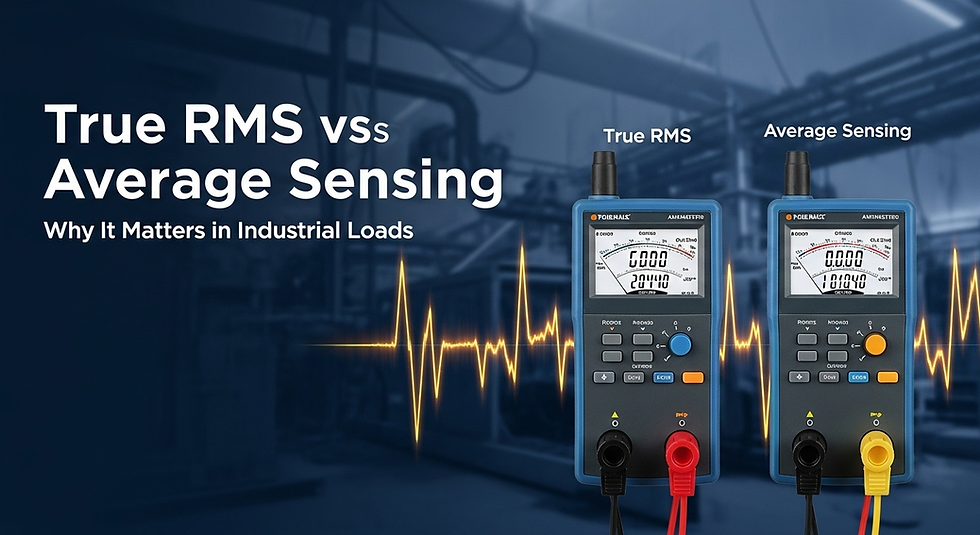How to Select the Right Mini Circuit Breaker for Your Application
- teddymccb
- Jul 28
- 4 min read

Whether you're designing a residential panel or managing an industrial switchgear cabinet, selecting the right mini circuit breaker (MCB) is crucial to electrical safety, system longevity, and code compliance.
But with various current ratings, trip curves, and pole configurations available, how do you know which MCB is the best fit for your specific application?
This guide simplifies the selection process to help you choose the most suitable MCB for residential, commercial, or industrial installations.
Understand What a Mini Circuit Breaker Does
A mini circuit breaker is an automatic, resettable device that protects electrical circuits from overloads and short circuits. When excess current flows, the breaker “trips” and cuts off power to prevent fire, equipment damage, or injury.
It’s ideal for:
Household distribution boards
Lighting and small appliance circuits
Control panels and switchboards
EV chargers and solar systems
Step 1: Determine the Load Requirements
Before selecting any MCB, calculate the total load (in amperes) the breaker will handle. For example:
A lighting circuit may need a 6A–10A breaker.
A socket ring circuit might require 16A–20A.
Electric heating or industrial motors may need 32A–63A or more.
Overloading an MCB with a higher load than its rated capacity can lead to nuisance tripping or failure.
Step 2: Choose the Correct Current Rating
MCBs come in standardized current ratings like 6A, 10A, 16A, 20A, 25A, 32A, 40A, 63A, 100A, and up to 125A in some models.
Always select a rating higher than the total load but below the wire’s current-carrying capacity.
Avoid using an underrated breaker as it may trip unnecessarily.
Don’t oversize the MCB to prevent hiding faults or overheating.
Step 3: Pick the Right Number of Poles
The number of poles in an MCB indicates how many separate circuits it can isolate:
1P (Single Pole): For standard 230V single-phase circuits
1P+N (Single Pole + Neutral): Includes neutral disconnection; good for safety
2P (Double Pole): For isolating both live and neutral in 230V setups
3P (Three Pole): Used in 3-phase systems (industrial)
3P+N or 4P: Full-phase + neutral isolation, often for motors or heavy loads
Use single pole for domestic lights or sockets, and 2P/3P for heavy-duty equipment.
Step 4: Understand Trip Curve Types (B, C, D)
MCBs operate with defined trip curves based on how fast they disconnect when overloads occur:
Type | Trip Range | Suitable For |
B | 3–5x In (nominal) | Residential lighting & general circuits |
C | 5–10x In | Small motors, HVAC, mixed loads |
D | 10–20x In | Transformers, large motors, compressors |
Type B: Use in homes
Type C: Use in offices, mixed-use buildings
Type D: Use in industrial panels or specialized circuits
Step 5: Verify Compliance with Safety Standards
Look for MCBs that meet global or local safety standards, such as:
IEC 60898-1
IEC 60947-2
CE, CCC, or UL certifications
This ensures the product has been tested for:
Overcurrent and short circuit protection
Flame resistance
Mechanical durability
Proper isolation
Teddy MCCB, a trusted mini circuit breaker manufacturer, offers MCBs that conform to international compliance standards and are designed for both domestic and industrial installations.
Step 6: Consider Environmental Conditions
Choose breakers rated for the environment they’ll operate in:
Ambient temperature compensation for hot environments
Tropicalized or moisture-resistant housings for humid zones
IP-rated enclosures if installed outdoors
Some MCBs are even rated for solar, marine, or telecom environments.
Step 7: Match the Breaking Capacity
Breaking capacity refers to the maximum fault current an MCB can safely interrupt:
6 kA (6000 A): Standard for residential
10 kA (10000 A): Commercial & industrial setups
15–25 kA: High-capacity industrial installations
Select an MCB with a breaking capacity equal to or greater than the available short-circuit current in the system.
Step 8: Look at Mounting and Installation Options
Most MCBs are:
DIN rail mountable
Have standard widths (typically 18 mm per pole)
Compatible with modular panel designs
Make sure the dimensions and terminals match your existing panel to avoid retrofitting hassles.
Step 9: Don’t Ignore Brand Reputation and Support
Choose MCBs from manufacturers that offer:
Technical support and datasheets
Warranties and return policies
Bulk purchase options for projects
OEM/ODM customization
As a recognized mini circuit breaker manufacturer, Teddy MCCB provides a wide range of certified, reliable MCBs designed to meet professional-grade expectations.
Conclusion: Match Application to Specification
Selecting the right mini circuit breaker is a matter of understanding your load type, safety needs, and application environment. Whether you're managing a home circuit board or an industrial distribution panel, a properly chosen MCB ensures efficiency, safety, and long-term system reliability.
For dependable, standards-compliant, and cost-effective MCBs, visit the full selection at Teddy MCCB. official website for better quality and rates.
FAQs
What happens if I use the wrong trip curve MCB?
You risk either nuisance tripping (if too sensitive) or delayed disconnection (if not sensitive enough), which can damage equipment or cause fires.
Can I replace a fuse with a mini circuit breaker?
Yes. MCBs are safer and more convenient as they reset instead of needing replacement.
Are all MCBs compatible with solar installations?
Not all. Choose MCBs rated for DC or photovoltaic applications where needed.
What is the most common MCB for homes?
Type B, 6–32A single-pole MCBs are common in domestic distribution boards.
What’s the life expectancy of a mini circuit breaker?
Most are rated for 10,000+ operations, depending on quality and usage.



Comments